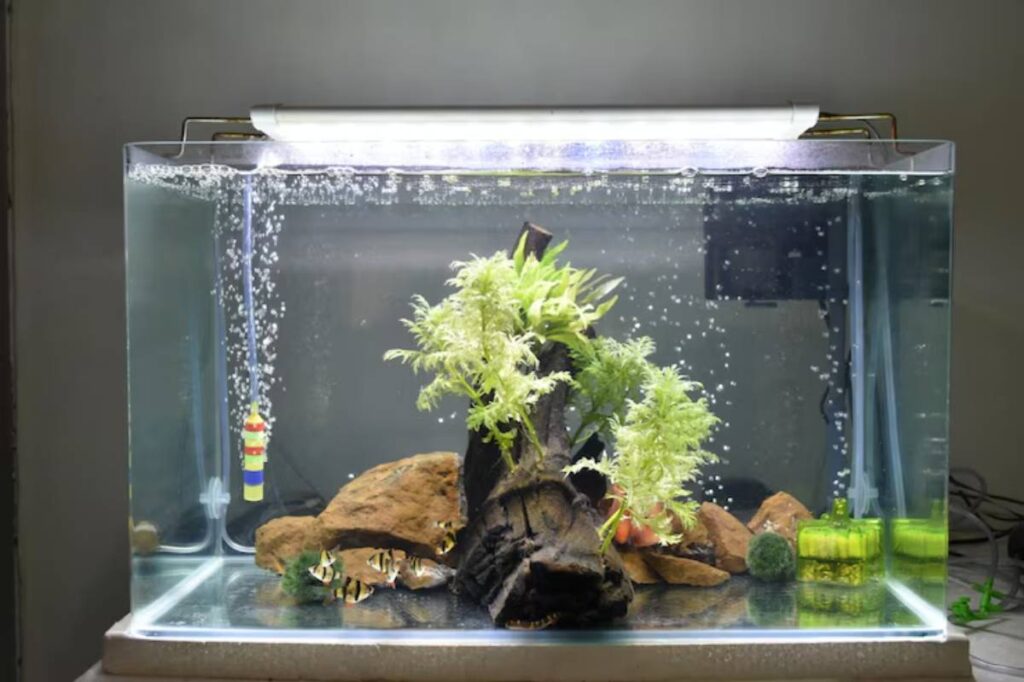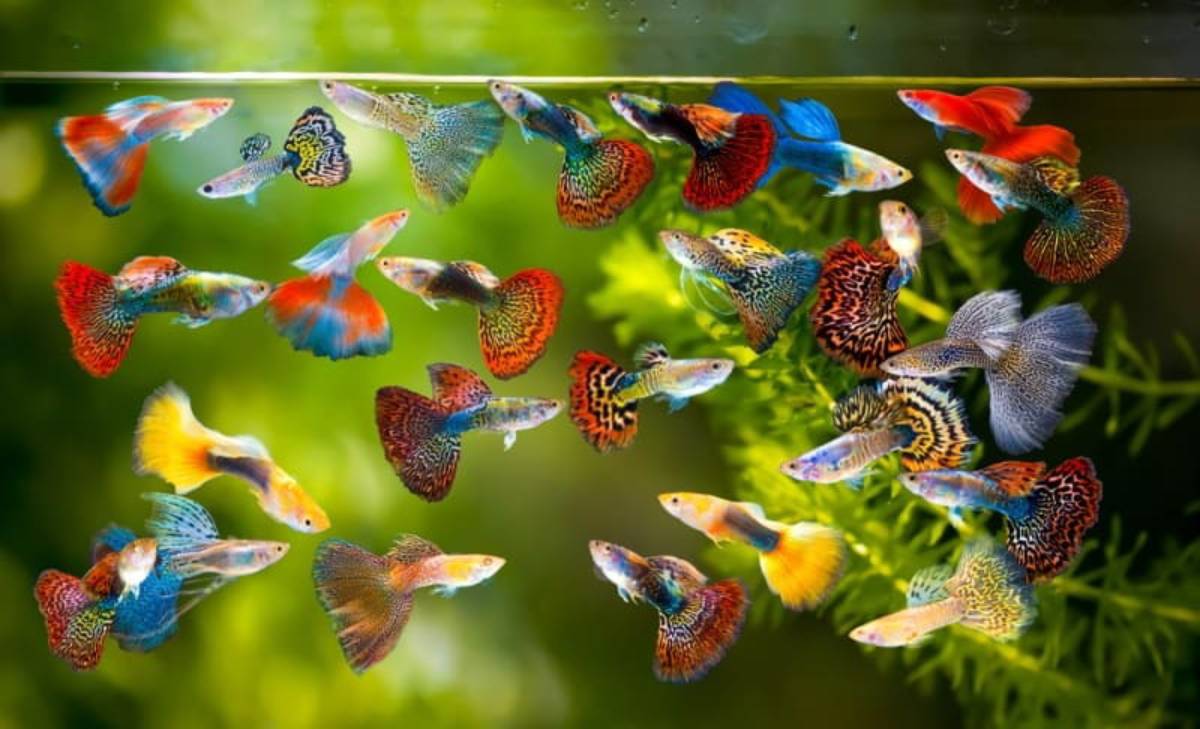The Pets Care Blog

Freshwater or Saltwater: Which Tank is Best for Beginners?
Setting up your first aquarium is an exciting journey, but it also comes with a cascade of questions. The first, and arguably the most important one, is Should you go for a freshwater or saltwater tank? This choice will affect your whole experience. It includes setup, costs, maintenance, and fish compatibility.
If you’re feeling overwhelmed, you’re not alone. As a new aquarist, you might wonder about the differences, costs, and fun of each choice. This article explores the freshwater versus saltwater tank debate. It covers everything you need to make a smart choice for your first aquarium.
What Makes Freshwater and Saltwater Tanks Different?
The Basics: Water Type and Fish Species
Freshwater aquariums copy lakes, rivers, and streams. They hold species such as guppies, bettas, and tetras. Saltwater aquariums mimic ocean habitats. They host colorful marine life, such as clownfish, tangs, and corals.
- Freshwater: Simpler water chemistry, usually tap water treated with a conditioner.
- Saltwater: Requires marine salt mix, RO/DI water, and more precise salinity levels.
Biological Complexity
Saltwater tanks tend to mimic reef ecosystems, which are biologically rich but sensitive. This means more attention to detail, such as calcium, alkalinity, and salinity. Freshwater ecosystems are more forgiving and easier to stabilise.
Key takeaway: Freshwater is typically more beginner-friendly in terms of biology and setup.
Cost Comparison: Freshwater vs Saltwater Tanks
Startup Costs
- Freshwater tank: Budget-friendly starter kits are widely available. A basic 20-gallon setup can cost around £80-£120.
- Saltwater tank: You’ll face higher initial costs (£200+). You’ll need to pay for protein skimmers, salt mix, and lighting.
Ongoing Maintenance Costs
- Freshwater: Lower overall due to basic filtration, less-expensive fish, and affordable food.
- Saltwater: More expensive due to equipment upkeep and pricier fish and corals.
Real-life example: Lisa started with a 30-gallon freshwater tank and spent under £150. Her partner set up a saltwater tank of the same size. They quickly spent over £400 on initial purchases.
Ease of Setup: What to Expect
Setting Up a Freshwater Tank

- Add substrate (gravel or sand)
- Fill with treated tap water
- Install the filter and heater
- Cycle the tank (establish the nitrogen cycle)
- Add fish gradually
Setting Up a Saltwater Tank
- Mix saltwater with RO/DI water
- Check and maintain specific gravity (salinity)
- Install live rock and substrate
- Add a protein skimmer, sump (optional), and lighting
- Cycle with live rock or bottled bacteria
- Monitor multiple parameters before adding fish
For detailed steps on aquarium cycling, read How to Cycle a New Aquarium the Right Way.
Key insight: Saltwater setups are more complex. They need more patience and research at the start.
Maintenance Demands: What You’ll Be Doing Weekly
Freshwater Tank Maintenance
- Weekly partial water changes (10-20%)
- Filter cleaning every 2-4 weeks
- Basic water testing (pH, ammonia, nitrite, nitrate)
- Scrubbing algae
Saltwater Tank Maintenance
- Similar weekly water changes
- Protein skimmer cleaning
- Monitoring salinity, calcium, magnesium, and alkalinity
- Managing coral health, if applicable
Human hack: As a beginner, simpler routines help build confidence and consistency.
Aesthetics and Fish Variety
Freshwater: Subtle Beauty
Freshwater tanks can be lush and tranquil. Popular aquascapes include:
- Planted tanks
- Natural riverbed layouts
- Community tanks with peaceful species
Saltwater: Colourful and Exotic
Marine tanks are showstoppers, featuring:
- Vibrant fish like clownfish and wrasses
- Corals that sway and glow under LED lights
- Complex reef ecosystems
Visual metaphor: Think of freshwater tanks as serene countryside gardens. Saltwater tanks resemble vibrant coral reefs in the tropics.
Fish Personality and Compatibility
Beginner-Friendly Freshwater Fish

- Guppies
- Corydoras catfish
- Zebra danios
- Platies
Beginner-Friendly Saltwater Fish
- Clownfish
- Royal gramma
- Damselfish (some species)
Note: Saltwater fish are more territorial. They are also sensitive to changes in water, so they need extra care.
Space and Size Considerations
Tank Size Recommendations
- Freshwater: Start with 20-30 gallons to allow stable water parameters.
- Saltwater: Minimum 30 gallons, but 50+ gallons is more forgiving for marine ecosystems.
Room Requirements
Both types need a level surface, a power supply, and protection from direct sunlight. Saltwater tanks may also need a sump cabinet or extra plumbing space.
Hack: Always think about the total weight when picking your tank stand and spot.
Noise, Smell, and Day-to-Day Living
Noise Levels
- Freshwater: Quiet with minimal hum from filters.
- Saltwater: Can be noisier due to protein skimmers, sump overflow, and cooling fans.
Smell Factor
Properly maintained tanks of both types should be odourless. A foul smell usually indicates poor maintenance.
A beginner once shared in a group that she was worried about a “fishy smell.” It turned out her filter sponge hadn’t been cleaned in months. Problem solved with a little rinse and consistency!
Which One Offers the Best Learning Curve?
Freshwater Pros for Learning
- Easier water changes
- Fewer parameters to monitor
- Cheaper mistakes
- Quick troubleshooting
Saltwater Challenges
- Steeper learning curve
- More technical gear
- Narrow margins for error
- Sensitive livestock
Analogy: Freshwater is like learning to ride a bicycle. Saltwater is like flying a drone – both fun, but one is much easier to start with.
Long-Term Enjoyment and Upgrade Potential
Freshwater:
- Great for planted tanks
- Easy to switch themes (biotope, community, species tanks)
- Can branch into breeding or aquascaping competitions
Saltwater:
- Endless upgrade options: reef tanks, coral gardening, advanced filtration
- Captivating for marine enthusiasts
- More depth in ecosystem knowledge
Think about your goal: Do you want a relaxing, easy hobby or a technical, eye-catching project?
Final Verdict: Which Tank is Best for Beginners?
Freshwater Takes the Lead
If you’re new to aquariums, freshwater tanks are the best choice. They offer a forgiving environment for learning.

- Budget-friendly
- Low-maintenance
- Easy to understand
- Ideal for families and casual hobbyists
Saltwater is Rewarding but Demands More
If you have time, money, and an interest in marine biology or reefs, saltwater aquariums can be rewarding. However, they also have challenges.
Conclusion: Your Aquatic Journey Starts Here
Choosing between a freshwater vs saltwater tank isn’t just about aesthetics. It’s about your lifestyle, commitment level, and curiosity. Freshwater tanks are great for beginners. They provide a gentle and rewarding start to the aquatic world. Saltwater tanks are more complex, but they offer a stunning display for those willing to dive in.
Ready to get started? Choose the tank that fits your pace and interests, and dive in. The magic of aquariums awaits, whether it’s the gentle sway of Java fern in freshwater or the lively dance of clownfish in a reef.
Which one are you leaning towards? Let us know in the comments, and don’t forget to share this guide with fellow aspiring aquarists!
Related read: Weekly Aquarium Maintenance Checklist.









